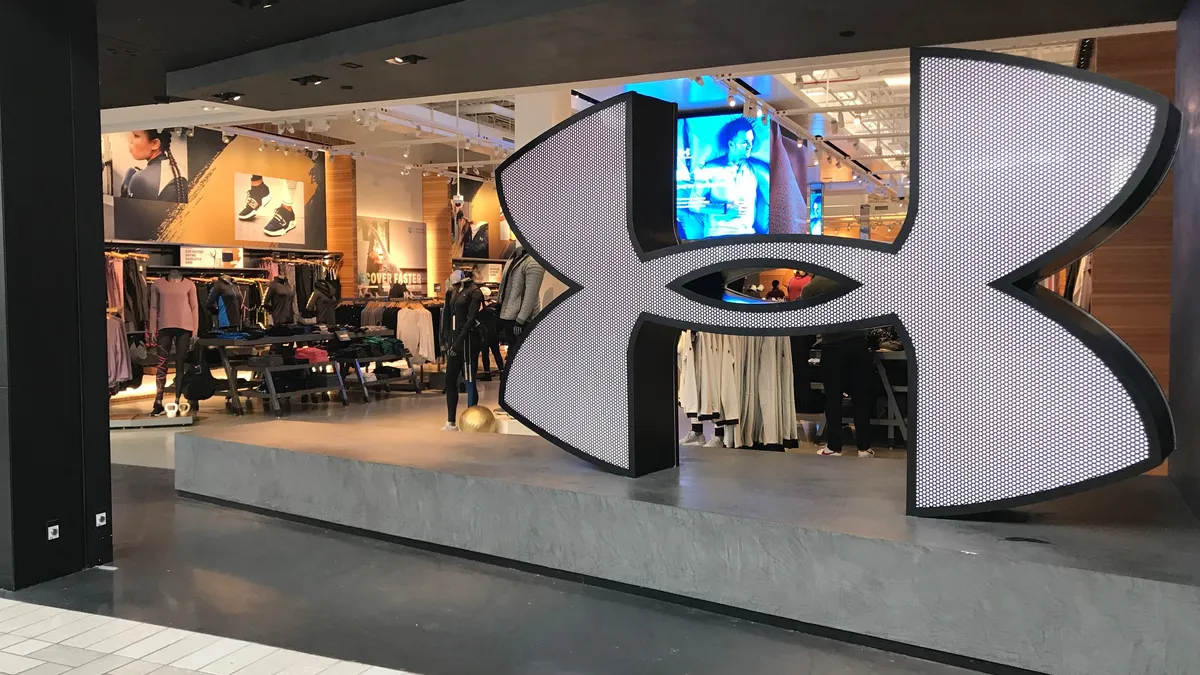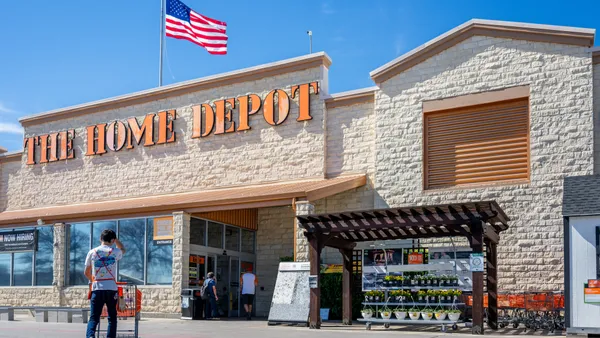If Under Armour has been firm on one thing over the past few years, it's the brand's purpose: performance apparel.
At the beginning of 2019, then-CEO Kevin Plank discussed plans to "double down on performance," citing it as a differentiator despite the fact that it "may be perceived as a weakness" to others.
"That's what gives us our reason for being … that premium performance positioning," he said at the time.
Then Kevin Plank left, replaced by Patrik Frisk in January, who had been the brand's chief operating officer. But even with new blood in the top spot, nothing changed about the brand's positioning.
"We're going to stick to it for now," Frisk said on his first earnings conference call as CEO. He noted that the company had conducted interviews with close to 50,000 consumers globally and felt confident in its strategy.
Now, it seems not even a pandemic can cause Under Armour to reconsider.
"We are centered in athletic performance," Frisk said on the retailer's first quarter earnings call last week, according to an Under Armour transcript. "There's no change to this purpose, and now, even more clearly, as the world continues to persevere through these challenging times, health, fitness, and wellness are even more center stage."
To some extent, that's true. The NPD Group on May 7 released a report detailing increases in sport and home fitness equipment, but that is buoying sales of yoga mats, basketball hoops and free weights, not performance apparel and footwear. In fact, in an April 22 note, NPD Vice President and Senior Industry Advisor of Sports, Matt Powell, said athletic footwear sales in Q1 were down in the mid-teens, and Under Armour specifically was down 25%, compared to declines in the teens for Nike, Adidas, Skechers and Asics.
Sweatpants, "the official work from home uniform," grew in the low singles, but every other main category of activewear apparel declined.
Tough times for everyone are tougher on Under Armour
It's fair to say there are very few retailers thriving during the pandemic. Even sportswear giant Nike said its stores in Greater China were "materially impacted" by COVID-19, with revenues falling in the region after 22 quarters of consecutive growth, and warned of "a material impact" to its direct and wholesale operations in North America in Q4.
Under Armour's revenue was knocked down 15 percentage points by COVID-19 in Q1, falling a grand total of 23%, to $930 million. Wholesale revenue decreased 28%, direct-to-consumer revenue decreased 14%, and North America revenue fell 28%. In Q2, revenue could be down by as much as 50% or 60%, CFO David Bergman said on the call.

"Although we do anticipate that our business will gradually reopen in the coming weeks and months, we believe there will be a number of challenges ahead for us and a greater global retail space, including the slow and progressive return to normalization, a highly promotional environment, and significant uncertainty in brick-and-mortar traffic and conversion as consumers return to stores," he said.
While the troubles posed by COVID-19 are by no means unique to Under Armour, they're hitting the retailer when it's down. For years, onlookers have questioned Under Armour's decision to not buy into the athleisure movement, and now Under Armour is stuck not only defending its brand positioning, but battling a pandemic on top of costly turnaround initiatives.
Operating loss fell 1,683% year over year to $558 million in the quarter, while net loss fell a jaw-dropping 2,723% to $590 million. The retailer attributed the steep declines to impairment charges and costs associated with its restructuring plan. (The retailer's restructuring plan involved abandoning its New York flagship store, which accounted for "nearly all" of the Q1 charges, executives said.) Even without those, though, adjusted operating loss and net loss came out to $122 million and $152 million, respectively.

"In the end, [Under Armour] came into FY20 with weak positioning (incl. pre-Coronavirus) & the pandemic appears likely to extend brand challenges & limit recovery vs peers," Wedbush analysts Christopher Svezia and Paul Nawalany wrote in emailed comments.
In other words: Under Armour already needed a win coming into 2020, and instead it's been met with an even more challenging landscape to compete in. Even before the sportswear brand's results came out, S&P revised Under Armour's outlook to negative based on expectations for "sharp revenue declines" and "a drop in consumer discretionary spending arising from the COVID-19 pandemic and resulting economic recession."
"Given the discretionary nature of performance sports apparel, we anticipate that consumer demand will decline materially amid high unemployment and economic uncertainty," S&P's report reads.
The retailer is responding the way many other retailers have: by borrowing more under its revolving credit facility (it now has $700 million outstanding), negotiating with vendors and landlords, and aiming to cut operating costs by $325 million through various measures, including limiting marketing, temporarily laying off associates and postponing capital expenditures. The retailer has also been negotiating extended payment terms for its sports marketing contracts.
"The good news is, I guess, that the consumer is coming back. I think the bad news is that it's taking a little longer than we would wish."

Patrik Frisk
Chief Executive Officer of Under Armour
While those measures may help stem the bleeding from the pandemic, they will come at a cost. The retailer already owes $593 million in long-term debt, and e-commerce cannot make up the 80% of Under Armour's global business that has been, in the words of Frisk, "at a standstill" since mid-March.
E-commerce saw growth, though executives wouldn't specify how much, and it still remains a low double-digit percentage of the brand's global revenue. Perhaps more worrying for Under Armour is that, while stores have reopened in China, traffic continues to be down year over year.
"The good news is, I guess, that the consumer is coming back," Frisk said of Under Armour's China business. "I think the bad news is that it's taking a little longer than we would wish."
Will pent-up demand help?
Frisk also noted that Under Armour is "grounded in team sports" — another part of society that has come to a full stop in recent months.
Right now, Frisk is banking on pent-up demand for that product once team sports start up again, but the fact of the matter is that it remains unknown when team sports will start up again, and the threat of another coronavirus outbreak later in the year casts even more doubt over team sports in the long term. Under Armour will need to rely on its core performance product to get sales before that happens. The problem with that is that Under Armour was already struggling to get away from off-price sales and move toward more full-price positioning before the pandemic.
Now, with the introduction of COVID-19 into the mix, the brand's ambitions to cut down on that sales channel have been kicked further down the road. Instead, Under Armour likely faces a promotional year ahead.
"In FY20, [Under Armour] may need to race to the bottom on price as it competes with other brands with superior product and marketing (Nike, Lululemon, etc) which will also likely be promotional," Wedbush's Svezia and Nawalany wrote. "Additionally, driving full price sales in the future (FY21) may limit sales growth (as already demonstrated) given consumers are wary of paying premium prices for UAA."
The other problem with looking to its performance sportswear to drive sales? It comes back, as has become habitual, to athleisure.
Athleisure was booming long before the pandemic forced consumers to work — and do pretty much everything else — from home. Now, the comfort economy, and athleisure with it, is coming out in full force, as consumers turn to sweatpants, yoga pants and leggings to replace their everyday workwear.
There's no doubt that Under Armour knows what its brand stands for, but the question now becomes what place that brand occupies during the pandemic.














